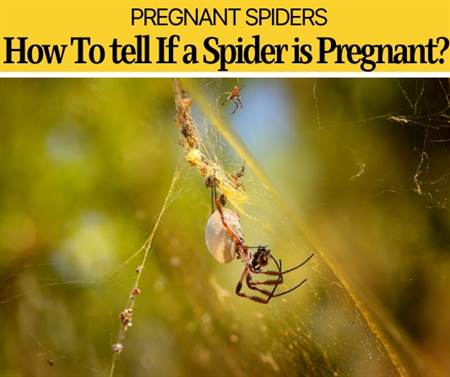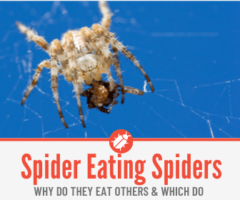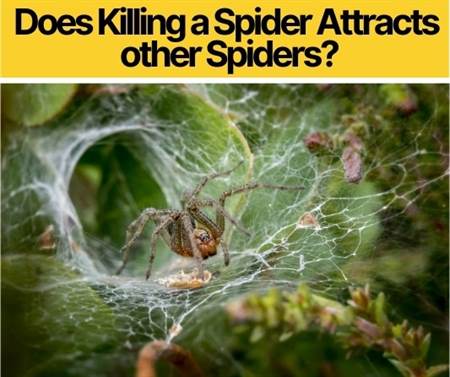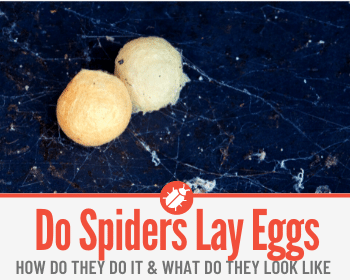 Wondering If Spiders Lay eggs? If so, how do they lay eggs and what do the spider eggs look like?
Wondering If Spiders Lay eggs? If so, how do they lay eggs and what do the spider eggs look like?
In this Article you will Learn:
- If Spiders Lay eggs and How do they lay their eggs,
- How many Eggs do Spiders lay and where do they lay them,
- How long Does it take for Spider Eggs to Hatch,
- Various Spider Reproduction Facts & Myths.
Spiders, just like any other animal, have their own process for reproducing.
Believe it or not, female spiders can actually be quite maternal and caring for their young, despite their often frightening reputation of eating other spiders or even eating their own babies.
How does this reproduction come about, you ask?
Well, spiders do lay eggs. (But not like chickens.)
In this article, we’re going to discuss all things you might be wondering now that you know that spiders actually do lay eggs.
But keep your eye out: if you’ve found what you suspect to be spider eggs, just know you may very well come across the mother next since they oftentimes keep close by to ward off danger to their unborn babies.
How Do Spiders lay Eggs?
For the most part, the process of how spiders lay eggs is similar across the board.
When the female is ready, she first fertilizes her eggs and then follows with the meticulous process of laying them.
She creates a kind of foundation – or what is described as a “bed” – with her silk.
She places the egg sac on top of that, then creates another silken layer – or “blanket” – to wrap around it, and finishes it off with an extra bit of silk for even more disguise and protection.
Sometimes, the spider egg sacs are bound together by silk strands, but mostly they are just individually engulfed within silk.
The reason behind wrapping up the egg sacs in silk is pretty straightforward: for protection against both predators and the elements.
This protective silky coating is also referred to as the “clutch”.
(Think of it like the womb or even the amniotic fluid around an unborn human baby: it is the barrier to the outside while being safe enough to develop within.)
How Many Eggs do Spiders Lay?
The more egg sacs laid the better chance of survival for the unborn spiderlings.
With that being said, spiders will either lay one egg sac containing as many as 1,000 eggs or will lay several egg sacs with fewer eggs in each.
The amount of eggs within a sac varies depending on the species.
A general estimate would be between 2 and 1,000 eggs, and some spiders are even capable of laying up to 20 egg sacs in their span of life.
(So think of that: 20 x 1,000 is a lot.)
Below is a brief list of several different spider species, relaying how many eggs they typically lay:
- Black widow: around 300 eggs
- Brown widow: around 150 eggs
- Hobo spider: between 50 and 100 eggs
- Brown recluse: up to 50 eggs
- Tarantula: between 500 and 1,000 eggs
- Cellar spider: between 13 and 60 for long-bodied, and between 10 and 27 for short-bodied cellar spiders.
As you can see, the range varies widely from species to species when it comes to the number of eggs laid.
When Do Spiders lay Eggs?
The time at which spiders will lay their eggs depends on what kind of spider it is.
For example, the hobo spider will lay her eggs between the months of September-October, whereas the brown recluse will lay her eggs between May-June.
Otherwise, the simple answer to this question is all year round.
Where Do spiders Lay their Eggs?
Of course, we now know that female spiders take careful precautions when it comes to protecting their egg sacs from harm (both from predators and weather).
But, when it comes to deciding where to lay her eggs, the mother spider takes an added step of security.
Of course, where the mother chooses to keep her eggs depends on that species’ natural environment.
Outdoor spiders will use numerous places for their hiding spots, such as attaching the wrapped egg sac to a leaf, setting it under rocks, hanging it from a web or tree, etc. Even just covering the egg sac with more silk lends extra obscurity.
Indoor spiders take a similar mentality when choosing where to lay their eggs, keeping in mind places that are dark, secluded, and dry.
Chimneys and attics do nicely, or even a simple webbing in a dark corner works as well to lay their eggs.
Plus, under furniture is a common place for spiders to keep their eggs safe (because, really, how often do we get under the couch to sweep?).
As a rule of thumb, spiders take into consideration the proximity to prey and predators when placing their eggs: the closer to their known predators, the less likely they are to set up camp for their unborn babies, and vice versa.
Although it is most common for spiders to find a stagnant and safe place to keep their eggs, other species take a different route.
The wolf spider is a prime example.
These female wolf spiders are known for actually carrying their egg sacs on their spinnerets rather than laying them somewhere.
Of course, she still goes through the whole process of wrapping the eggs in silk, but by choosing to keep the sacs with her at all times, she is ready to fight off harm at any moment.
There are other instances where the egg sacs are even carried by mouth, which is common among nursery web spiders. (Now that sounds exhausting.)
Needless to say, this is just proof of a nurturing and maternal side to spiders, as odd as that may sound to many people.
The average time it takes for spiders eggs to hatch and for a spiderling to come out is between 2-3 weeks.
That is the most common timeframe.
However, for some spiders, it can take as long as several months to hatch.
What Do Spider Eggs Look Like?
A spider’s egg sac can look different from species to species. Some are smooth to the touch, while others have a “fluffy” feeling, and typically they are white or brown.
Here are some Pictures of Spider Eggs and their Egg Sacs
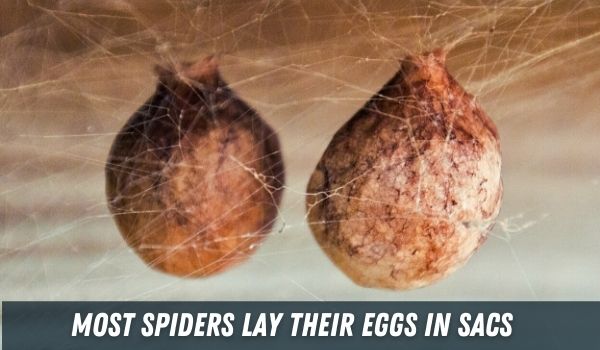
They can be round or oblong in shape, and some have even been described as looking like little fluid droplets.
The size of a spider’s egg sac, too, will vary.
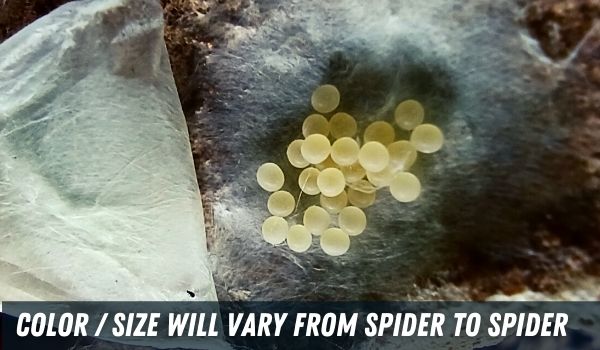
Some can be quite small – the size of a fingernail – and others can be larger than the spider itself.
Below are a few different spider species and what their eggs tend to look like:
- Black widow egg sacs: yellow and shaped like a teardrop
- Brown widow egg sacs: also yellow, but are round and covered in silk spikes
- Yellow garden spider egg sacs: sphere in shape, and between a white and light brown color
- Wolf spider egg sacs: small and grayish, with a texture making it look almost like a rough stone
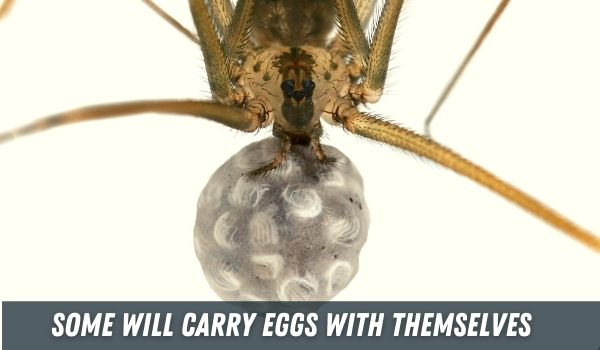
Do spiders Have to mate to Lay Eggs?
Absolutely, Spiders indeed do have to mate in order to be able to lay eggs.
A female spider must have the male’s sperm in order to fertilize her eggs. Male spiders have their own genitalia, and they are “syringe-like” appendages called pedipalps.
They use these pedipalps to transfer their sperm to the female spider when mating. And only after the female fertilizes her eggs does she then lay them.
There is a uniqueness to this, though. The female spider can decide whether to use the sperm right away or not.
She can carry the sperm for as many as 2 years before using it for fertilization, carrying it inside her “spermatheca”, which is essentially her sperm storage space. (What an ability!)
Extra fun fact: the female spider can even hold sperm from several different mates at the same time.
Continue Reading: Pregnant Spiders
How long Until Spiders lay Eggs after Mating
Only once the spider reaches adulthood will it be ready and able to mate and produce eggs.
Spiders have to mature fully first, and that takes about a year.
In fact, they have general life cycles and they come in 3 stages:
- The egg: as mentioned previously, typically lasts a few weeks
- The spiderling: considered to be in this stage for 5 to 10 molts (molting meaning the process of shedding their exoskeleton), or about a year
- The adult: means that the spider has fully matured and grown at this point, and is ready to mate (generally in this last stage for another year, before dying)
In total, the typical lifespan for a spider is just a couple of years, with the exception of the tarantula.
The females can live up to 20 years, 10 times longer than that of the average spider.
All spiders go through the same life stages, though, regardless of the species.
Do Spiders Give Birth?
Spiders do not give birth, because instead, they lay eggs. Rather, spiders are birthed from the eggs (aka hatched).
How do they hatch, you ask? Well, this can happen in different ways.
The spiderling may simply hatch out of the egg on its own, or – like in cases with the wolf spider – the mother will actually bite into the sac in order to help the spiderlings emerge.
There is a third process, and that is called “ballooning”.
This is where the spiderlings will float into the wind by shooting out silken threads, and then disperse from their eggs from there (just like in the scene from Charlotte’s Web).
Do spiders die After Laying eggs?
Yes, it is common for the female spider to die after laying her eggs.
Though, not all spider species die subsequently from this.
Spiders that do live after laying their eggs typically only last for a year or two after. A spider’s lifespan is really not that long.
Getting Rid of Spider Egg Sacs
If you’ve found spider egg sacs in your home, there are different ways of getting rid of them.
You can vacuum them up and immediately throw out the bag; this is a nice method since it’s relatively hands-off.
Simply sweeping, bagging up, and throwing away works too.
Of course, you can use a general pesticide – just like you would for any other spider – but if you prefer to go the DIY lane, bleach is an effective alternative.
Or, if you don’t mind getting more up close, the good ole paper-under-a-cup method works just as well.
There are even some spiders that lay their eggs in mulch…
Spiders love dark, secluded, and damp places to live, so it is natural for some to be attracted to mulch. For this reason, yes, it is possible spiders can lay eggs here. However, spiders tend to lay their eggs in drier places.
The most common type of spider you are likely to find nestled in between mulch is the woodlouse hunter spider.
If you don’t know what one looks like, you’ll be able to spot it by its red, shiny legs and off-white body.
Busting Spider Egg Myths
There are a lot of myths and rumours going about spiders, some even include their ability to lay eggs in your skin or crawl in your ear to lay their eggs.
Let’s see if any of that is actually true.
1.Spiders Laying eggs in Human Skin
Similar to the question posed prior – whether spiders can lay eggs in your ear – this is a resounding no. Again, a myth with related origins.
Though, there is another reason that perhaps drives this particular fear.
There is a kind of animal that is known for being able to lay eggs under the skin. It is called the botfly.
These are what are called “parasitic organisms”. A botfly attaches themselves to mosquitoes, transferring their eggs onto this new insect (their host, essentially).
From here, the mosquito carries the botfly eggs, and it is when the mosquito eventually bites a human that the botfly eggs are once again transferred to its new host: the human.
Once laid by the mosquito bite, the eggs develop into a parasite, living under the skin. It will create a swollen area or lesion and can result in infection.
And yes, it can definitely be painful (as it naturally sounds like it would).
Fret not, though, this is a rare occurrence.
2.Spiders Laying Eggs in Your Ear
Ok, let’s clear this question up once and for all: no. Spiders cannot lay eggs in your ear. This is a myth.
Spiders cannot live inside a human body and therefore cannot produce eggs there.
Sure, it is possible for a small spider or insect to crawl inside a human ear.
But, it is extremely rare. Even if it happened, the spider would try to make their way right back out.
It’s not enough room for a spider to stay there very long, let alone produce and tend to her eggs there.
Why is this a fear?
There was a news story in 2012 about a woman who went to the doctor complaining of itching in her ear, and lo and behold, it was due to a spider that crawled inside her ear during her sleep.
How long had it been there for? 5 days.
So, of course, this story is going to cause panic and a trickle-down fear of a repeat occurrence.
This fear may also stem from something else entirely. There have been instances of parasites being found within a person’s ear, having come from some kind of fly larvae. (Again, rare.)
So, there is that fact too which may skew people’s concerns when it comes to spiders and their ears.
3.Spiders Laying Eggs in Bananas
Yep, you guessed it. Another myth.
Think about how a banana is shaped, or more specifically, enclosed.
There is no way for a spider to enter a banana that hasn’t yet been opened, and thus impossible for spider eggs to be laid there.
Even if the banana is opened, you’re either going to eat it right away or throw it out (since they go bad quicker than anything). Not conducive to a spider’s habitat.
No need to fear here.
Spiders will Lay Eggs when They Bite you
This is yet another false belief. Spiders do not lay eggs when they bite you.
The thought process behind this is that the venom from the spider bite creates the right conditions for eggs to form, but this is simply not true.
Myths like this – and the others already discussed here – either stem from other closely related facts or nothing but stories.
Seeing as how arachnophobia is a widely shared phobia, any horror tale relating to spiders will naturally become popular and widespread.
Where there is fear there is a story, I suppose.
Essentially, arachnophobia gives way to great horror and fiction.
Think about that scene in Harry Potter and the Chamber of Secrets when Harry and Ron are being chased by gigantic, talking spiders.
My point exactly.
Spiders Laying Eggs in Fruit
The answer to this question would be a “no”, as well. (Ref. “Do spiders lay eggs in bananas?” above.)
Is it possible for a spider to be found on fruit or scampering about a bunch of grapes or something of the sort?
Sure. But it doesn’t happen often, nor do spiders commonly sneak their way from shipments of fruit or vegetables into the grocery stores.
Since fruit is not a viable or long-lasting environment for spiders to live in, they will not be able to lay eggs there.
Plus, it’s impossible for a spider to “inject” fruit with its eggs, either.
So all around, no, you won’t find spider eggs inside or on your next produce buy.
Conclusion
Although we might be quick to fear spiders, it is clear that they possess so many more abilities than we see at first glance.
The mother’s ability and process for laying and caring for her eggs is incredible, and perhaps even a little surprising to those of us unfamiliar with the scope of aptness a spider has.
Indeed, a mother spider has a keen and nurturing take when it comes to her unborn babies. And yes, we may still carry certain preconceived ideas about spiders in general.
But, perhaps now you’ll think back on some of the myths we’ve cleared here, and not be as fearful of the eight-legged creature in the future.



